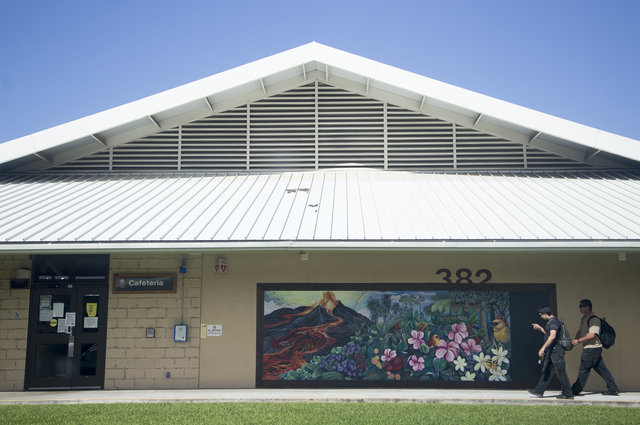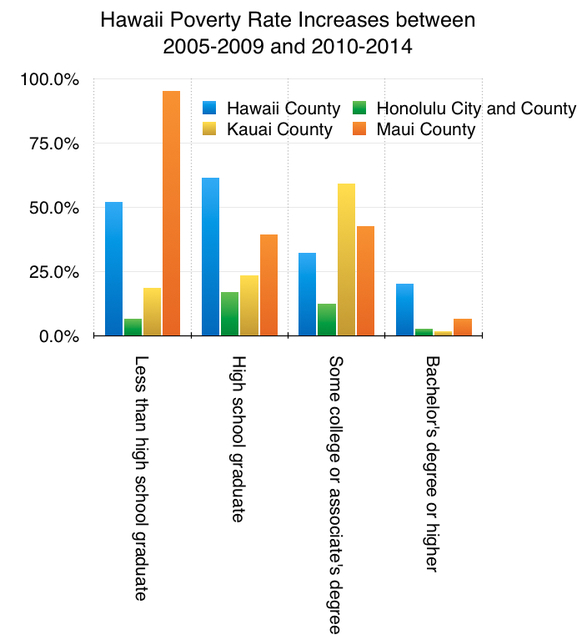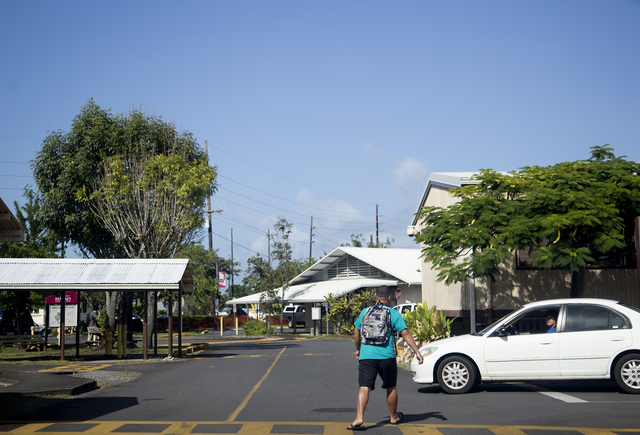HAWAII ISLAND —Hawaii County residents earn less than their counterparts on the other Hawaiian Islands, an earning gap that remains even among people with the lowest education levels who typically land at the bottom of the pay scale, according to data released this month by the U.S. Census Bureau.
Big Island residents 25 years and older earned a median of $30,853 a year between 2010 and 2014, based on data from the U.S. Census Bureau’s latest American Community Survey estimates. That’s $6,561 less than the state median, and $3,044 less than the next lowest island’s median pay, which is on Kauai.
Meanwhile, during the same five-year period, Hawaii Island residents above 25 without a high school diploma earned a median of $19,895 a year, compared to $22,247 statewide. Maui residents without a diploma earned the most, at $27,306 a year.
Among Hawaii Island’s 131,247 people over the age of 25, 3.1 percent had an education below ninth grade, compared with 4.3 percent statewide. Meanwhile, a total of 5.9 percent had no high school diploma or equivalency. Those with some college but no degree totaled 22.7 percent, while 35.6 percent had an associate’s degree or higher.
Income inequality in the United States continues to grow, and education is one of the most important factors in the gap between rich and poor.
In a 2013 article based on U.S. Census data, the Pew Research Center found that in 2012, for the first time on record, nearly $1 out of every $2 of income in the U.S. went to the college-educated. Since only one in three households was college-educated, that meant half of the U.S.’s total income was going to only a third of its households.
Meanwhile, “the share of the income pie received by households with only a high school education or less fell 15 percentage points from 1991 to 2012,” the article states.
Here on Hawaii Island, the Census five-year estimates through the end of 2014 found that the poverty rate among Hawaii Island high school graduates and bachelor’s degree holders grew the fastest in the state, compared with the previous five-year period.
From 2005-2009, 11.7 percent of Hawaii County’s high school graduates earned below the poverty line, which was $11,161, according to the U.S. Census Bureau.
But from 2010-2014, that poverty rate increased by more than 61 percent to 18.9 percent.
Hawaii County residents holding bachelor’s degrees or higher also saw a marked increase in the poverty rate. During the five-year period from 2005-2009, 7.4 percent of residents with bachelor’s degrees earned below the poverty line, compared with 8.9 during 2010-2014.
In addition to countywide data, the Census reports also included information broken down by neighborhood, yielding an interesting look at Hawaii Island’s most educated and affluent areas.
The area with the biggest percentage of residents with bachelor’s degrees or higher was the Upper Kaumana area of Hilo, at 37.6 percent, while the area surrounding Waikoloa Village had the highest percentage of people with at least a high school diploma, at 96.5 percent.
The neighborhood with the highest percentage of residents who had not obtained a high school diploma was the Puna area, including Keaau and Kurtistown, a 53-square-mile portion of the island running from the Mauna Loa Macadamia Nut Co. at the northeast boundary to the southwest through Keaau, Kurtistown and up to the limits of Mountain View. The area extends southward to the northern borders of Hawaiian Paradise Park, Orchidland Estates and Hawaiian Acres.
Email Colin M. Stewart at cstewart@hawaiitribune-herald.com.








